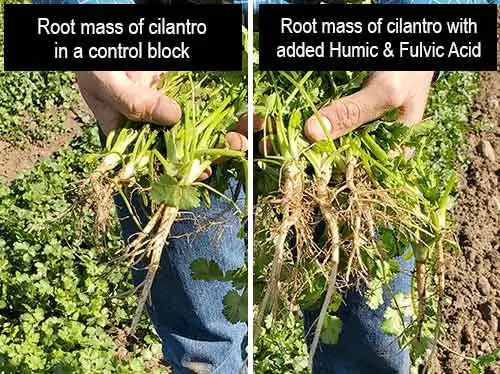The impact of climate change on factors such as temperature, CO2 concentration, and rainfall has significantly caused issues not just for humankind but also for plants. And this effect on plants is due to the impact of climate change factors on the soil. Can humic and fulvic acids help soil fight climate change?
Climate change factors like increasing temperature and decreasing rainfall have a negative impact on soil organic matter as they lead to loss and reduction of organic matter.
Then how to improve the soil organic matter levels in soil? Why is humus important to the soil? How to give soil a sufficient amount of humus?
Why Humus is Important to Soil?
Humus does all the good things to the soil. It is like, if you want to keep soil structure intact, give humus. If you want to increase water holding capacity of soil, improve humus content in soil. To maintain a healthy soil environment for beneficial organisms, humus is important. And if the content is low, you soil might look unhealthy like this:

How to improve humus content in soil?
Give humic acid and fulvic acid to help soil improve humus content .
What are Humic and Fulvic acids?
Humic and Fulvic acids can be considered as the main ingredient for soil health. They work together to create healthy microbe-rich soil, increase plant health, and improve crop yields.
Benefits of Humic Acid and Fulvic Acid on Crop Yields
Humic acid acts as a soil conditioner that increases your soil’s ability to retain nutrients and water. Not just that It helps increase the permeability of the cell wall so the Fulvic acid can deliver its benefits, stimulates microbial activity in the soil, chelates toxic metals so they don’t end up in your plants and many more.
But Humic acid does not work alone, it needs its partner Fulvic acid to deliver all its benefits to soil. Fulvic acid acts as a biostimulant to improve seed germination, helps to decrease water stress and many more
Humic Acid and Fulvic Acid: The Duo
Giving Humic and Fulvic acid together helps in increasing root mass even at low concentrations.

Increased root mass allows plants to acquire more macro and micronutrients in the soil to pass on to the leaves and fruit, thereby helping in yield increase. The greater the root mass, the stronger the microbial community. Plants exudate from the roots, are beneficial to microbes which in turn benefits plants by bringing nutrients.
Less is More
To avail great benefits from this duo don’t go for increased application of Humic and Fulvic acids to the soil, as they say “If taken in excess, even Amrutha (divine nectar) is poison”. As use of these compounds at high concentrations decreases root and shoot growth. And it is better to consult before applying.
Benefits of Humic and Fulvic acid to your Farm
Like I said before, these compounds work wonders when given in minimal yet adequate proportions. With this approach, you can expect minimal investment and maximum return on investment.
Give your fields Total 20 and see how the small packet brings large happiness to your fields, as it is formulated with the adequate amount of humic and fulvic acid to create a lively microbial community that will increase your soil and plant health.

Climate change has been a hot topic for a long time, with its greatest impact on soil health resulting in reduced crop yields. So it is very important to know your soil and help it recover from any deficiencies. Giving humic acid and fulvic acid helps improve soil organic matter content, thereby contributing to improved soil health and increased productivity on farms.